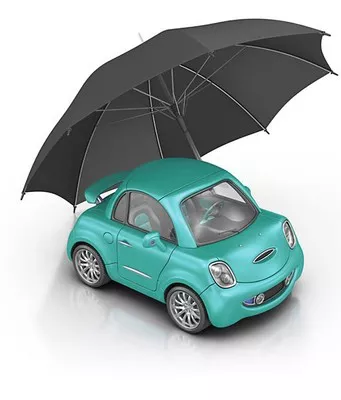Car insurance is a critical financial safeguard for vehicle owners, providing protection against unexpected expenses resulting from accidents, theft, or other damages. One of the most significant benefits that policyholders can enjoy over time is the No Claim Bonus (NCB). This article will delve into the intricacies of NCB, exploring what it entails, how it works, and why it’s a valuable consideration for drivers.
What is No Claim Bonus (NCB)?
No Claim Bonus (NCB), also known as No Claims Discount (NCD), is a reward system offered by insurance companies to policyholders who do not make any claims during the policy period. It serves as an incentive for safe driving and responsible usage of vehicles. In essence, NCB is a discount provided on the premium of the next year’s car insurance policy, reflecting the insurer’s acknowledgment of the policyholder’s claim-free record.
How Does No Claim Bonus Work?
The operation of NCB is straightforward but can vary slightly among insurance providers. Here’s a general overview of how NCB works:
1. Accumulation of NCB: When you don’t make any claims during a policy year, you become eligible for a No Claim Bonus. This bonus accumulates over consecutive claim-free years.
2. Discount on Renewal: At the time of renewing your car insurance policy, the accumulated NCB is applied as a discount on the premium for the next policy period. The discount percentage typically increases with each claim-free year, encouraging policyholders to maintain a safe driving record.
3. Transferability: NCB is attached to the policyholder rather than the vehicle. This means that if you switch your car or insurer, you can transfer your accumulated NCB to the new policy. This transferability enhances its value as it rewards good driving behavior across different vehicles.
4. Impact of a Claim: Making a claim during the policy year usually leads to the loss of the accumulated NCB. However, some insurers offer options to protect or retain a portion of the NCB even after a claim, albeit with certain conditions and limitations.
Benefits of No Claim Bonus
No Claim Bonus offers several advantages to car owners and plays a pivotal role in the decision-making process when choosing car insurance. Here are some notable benefits:
1. Cost Savings: The primary benefit of NCB is the reduction in insurance premium costs. As the NCB percentage increases each year, policyholders can enjoy significant discounts on their premiums, resulting in tangible savings over time.
2. Encourages Safe Driving: NCB acts as an incentive for drivers to adopt safe driving practices and avoid risky behavior on the road. This contributes to overall road safety by reducing the frequency of accidents and claims.
3. Flexible Transferability: The ability to transfer NCB between insurers and vehicles adds flexibility for policyholders, enabling them to switch insurance providers without losing the accumulated bonus.
4. Long-Term Reward: NCB is a reward for loyalty and responsible driving behavior. Over the years, the accumulated bonus can translate into substantial savings, making car ownership more affordable and financially sustainable.
How No Claim Bonus is Calculated
The calculation of No Claim Bonus is typically based on a predefined percentage scale determined by the insurance provider. The scale varies from insurer to insurer and can range from 20% to 50% or more. Here’s a general example of how NCB is calculated:
- First Claim-Free Year: Typically earns a 20% discount on the premium.
- Second Claim-Free Year: Earns a higher discount, often around 25%.
- Subsequent Claim-Free Years: The discount percentage continues to increase with each additional claim-free year, up to a maximum limit set by the insurer.
It’s essential to check with your insurance provider regarding the specific NCB scale and conditions applicable to your policy.
Conditions and Exceptions
While No Claim Bonus is a valuable benefit, there are certain conditions and exceptions to keep in mind:
1. Claim Limitations: Some insurers impose a maximum claim limit within a policy year to retain the NCB. Claims exceeding this limit may result in the loss of accumulated NCB.
2. Claim Protection Add-ons: Insurance companies offer NCB protection as an add-on feature, allowing policyholders to retain their NCB even after making a claim. This add-on typically incurs an additional premium.
3. Transferring NCB: When switching insurers, it’s crucial to provide proof of your NCB entitlement from the previous insurer to ensure that the discount is applied correctly to the new policy.
Tips to Maximize No Claim Bonus
To make the most of your No Claim Bonus and maximize your savings, consider the following tips:
1. Drive Safely: Avoid accidents and traffic violations to maintain a claim-free record and earn higher NCB percentages.
2. Regular Maintenance: Keep your vehicle well-maintained to reduce the risk of mechanical failures and breakdowns that could lead to claims.
3. Opt for NCB Protection: If available, invest in NCB protection to safeguard your bonus even in the event of a claim.
4. Compare Policies: When renewing your car insurance, compare policies from different insurers to find the best NCB benefits and premium rates.
Conclusion
No Claim Bonus is a valuable incentive provided by car insurance companies to reward safe driving habits and responsible vehicle ownership. It offers financial benefits through premium discounts and encourages policyholders to maintain a claim-free record. Understanding how NCB works and the conditions associated with it can empower car owners to make informed decisions when selecting and renewing their insurance policies. By leveraging No Claim Bonus effectively, drivers can enjoy significant cost savings while contributing to safer roads and enhanced insurance experiences.


